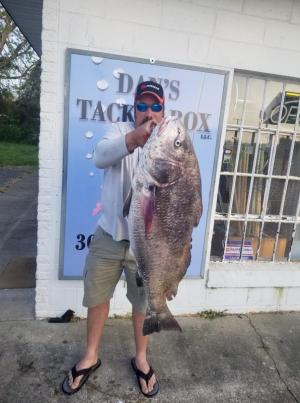The Atlantic States Marine Fisheries Commission met on Tuesday and unanimously passed a motion to initiate an addendum to address the overfishing status of striped bass. While I wasn’t there, it sounds like everyone has finally gotten the message that stripers are in trouble and managers need to do something about the situation.
Several measures were listed that should help reduce striper mortality including a minimum size for the coast and the Chesapeake Bay, a slot limit that would prevent harvest of any fish over 40 inches, mandatory use of circle hooks when fishing with bait, seasonal closures, and applying needed reductions in both commercial and reactional sectors.
I have long suggested a slot limit to conserve big fish. My Facebook is filled with photos of folks with huge red drum caught and released from boat and beach because the law prohibits killing these fish over 27 inches in Delaware, with similar restrictions in other states. Can you imagine consistently catching and releasing 45- to 50-inch rockfish?
Seasonal closures could be during the summer when water temperatures are high, raising the mortality rate of released rockfish. On the other hand, raising the minimum size will increase the number of released fish and thereby the release mortality.
Each state will now hold public hearings to determine how they will comply with these guidelines. Delaware anglers have a very poor track record when it comes to public hearings. I hope they turn out for this one.
Indian River Inlet sidewalk
On Tuesday afternoon I headed down to Indian River Inlet to get in on the shad run. While I did manage to catch some shad, it was the people I met while fishing from the sidewalk on the northside that made the trip worthwhile.
If you have been there, you know the sand has washed out behind the sidewalk, and that has caused the sidewalk to collapse. Currently, there is an orange plastic fence to block access to the area, but it is easily breached.
As I was fishing, a group of half a dozen people began to examine the area, and I surmised they were from the Army Corps of Engineers. After they had a look around, I was able to speak with the project manager and found out the sand behind the sidewalk belongs to Delaware State Parks, and the sidewalk belongs to the Army Corps of Engineers. When I asked how long before we could expect the situation to be repaired, I was told “awhile.” It seems the Corps has no money for recreational projects.
Several people had crossed the plastic fence and were fishing on the broken sidewalk. The project manager said the area would have to be better protected from intrusion, which makes sense because it is dangerous and no doubt someone is going to fall on the uneven concrete.
If you fish here, I suggest you contact both of our U.S. senators, Tom Carper and Chris Coons, and our lone representative, Lisa Blunt Rochester, and ask them to shake a bit of money from the Corps budget to repair one of the most popular fishing locations in Delaware.
Round Pole Road Bridge - It seems like the government is out to close off all our favorite fishing spots. First the sidewalk at Indian River Inlet, and now the Round Pole Road Bridge.
Beginning May 6 and lasting until June 7, pending weather, Round Pole Road Bridge over Beaver Dam Creek will be closed while DelDOT contractors repair the bridge walls.
Fishing report
Fishing is pretty good from shore and decent in the ocean on those rare days when the weather allows boats to get away from the dock. The hot spot for the past week has been Broadkill Beach. Black drum continue to be caught on clams, bloodworms and sand fleas from shore. Most are in the 10- to 20-pound range with Chad Bayless’s 45-pounder the largest so far. I have also had reports of a few black drum caught on the Coral Beds from boats. Clams have been the top baits there.
The Indian River Inlet is seeing excellent shad fishing. I was there on Tuesday afternoon and caught several on a shad dart and small metal spoon rig. Incoming water is the prime time to fish. A few blues are also in the mix.
Big blues continue to be caught from the fishing pier at Cape Henlopen State Park. Cut mullet or bunker has been the best bait, but I have seen a few taken on metal lures.
The surf from Herring Point to Fenwick Island has produced a few blues, blowfish and small rockfish. Bloodworms work best for the rock and blowfish with cut bait for the blues. Tog have been caught over ocean structure.

























































